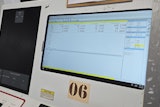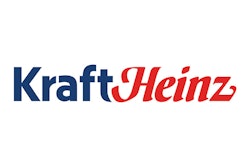Rodents scavenge for three main things to survive: food, water and shelter. Your food processing facility almost certainly offers all three, putting you at risk of a rodent infestation.
During the fall and winter months, temperatures drop causing rodents to become more active in seeking out a warm home to survive until spring. They could quite literally be chomping at the bit to get inside your facility.
Rodents are adaptable creatures that can pose significant health and safety threats to food processing facilities. They will gnaw on just about anything, including wood, paper and drywall. Due to their poor eyesight, rodents have been known to mistake electrical wires for roots, one of their favorite things to chew on in the wild, which can lead to a fire and cause serious damage to a facility.
Rodents can also fit through the tiniest of openings. Often, rodents can recognize a pathway inside and gnaw on a small hole on the outside of a building to make it large enough for them to fit through. Rats are able to squeeze through a hole the size of a quarter and mice a hole just the size of a dime, so even seemingly small cracks and gaps can be an entryway for these pests.
Once inside, rodents become an immediate risk to a food processing facility. These pests can carry and spread more than 35 diseases, including Hantavirus, salmonella, jaundice and plague, all of which can be transmitted through contact with either the rodent or its bodily fluids. Because they have small bladders, rodents urinate and defecate dozens of times a day, essentially leaving behind a trail of dangerous pathogens in their wake. Add in the fact that they’ll be hunting for food around your facility, and rodents become a big risk to products, and therefore to your business.
Rapid reproduction is another characteristic of rodents that can cause concern. As soon as they find warmth and shelter, rodents will start to reproduce and can multiply quickly.
There are some telltale signs of rodents to be aware that can help you recognize and stop rodents before you’re dealing with an infestation. Train your staff to look out for these signs, and contact a pest control professional if you come across any of them.
- Urine marks and droppings can be found nearly everywhere a rodent has been. Look for yellowish discoloring and tiny brown pellets. Urine marks also glow under UV light, so a black light inspection can help detect an infestation.
- Rub marks along baseboards and around corners that are brownish in color can be a sign of rodents, as they tend to stick close to walls when exploring new areas.
- Musky odors may also be a sign of rodents and can help identify nesting areas, as more mice naturally will mean a stronger odor.
- Noises in the walls, basement or ceiling might mean that there are rodents running around, especially if you hear them at night.
Rodent problems can quickly go from a small problem to a full blown infestation. If you believe that you might be dealing with an infestation, call a pest management professional immediately. Trying to catch rodents yourself can actually make the situation worse in the long run if unsuccessful, as mice and rats can become wise to trapping techniques if they’ve encountered one before.
Luckily, there are still some things that you can do on your own to help keep rodents out of your facility. Here are some exclusion and prevention tips that can help:
- Store food properly by keeping all food products tightly sealed and on shelves off of the floor. Containers made of plastic or metal are preferable, as these are more difficult for rodents to chew their way into.
- Clean up any food particles and spills as quickly as possible. Regular sweeping and mopping will help eliminate rodent attractants. This includes in and around trash receptacles.
- Seal openings around the exterior of your building. Because rodents can fit through such small holes, you’ll want to use caulk or another waterproof sealant to close any gaps, especially around pipes and other penetration points.
- Remove clutter both inside and outside the facility. Rodents use a variety of materials to build their nests, so dispose of any excess materials like cardboard boxes.
- Trim back vegetation at least two feet away from the building and cut the grass regularly. Vegetation can serve as a “jumping off” point that can make it easy for rodents to get inside.
While these tips can help keep rodents out of your facility, there is always a chance that they can find a way inside. Be sure to work with a pest management professional to design and implement an ongoing rodent control program. If you remain vigilant in your facility’s upkeep and keep your eyes and ears open, you can help prevent these pests from turning your flourishing food processing facility into a homey rodent hotel for the winter.
About the author
Dr. Zia Siddiqi is Director of Quality Systems for Orkin. A board certified entomologist with more than 35 years in the industry, Dr. Siddiqi is an acknowledged leader in the field of pest management. For more information, e-mail [email protected] or visit www.orkincommercial.com.























